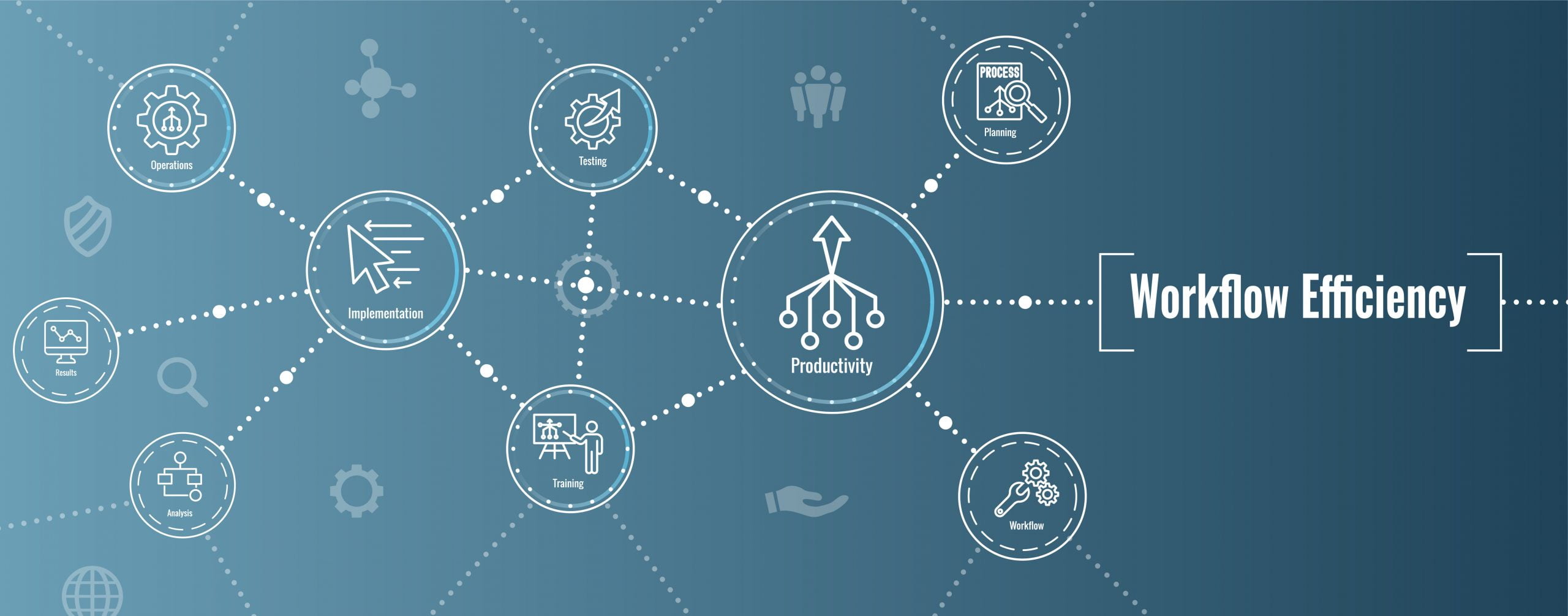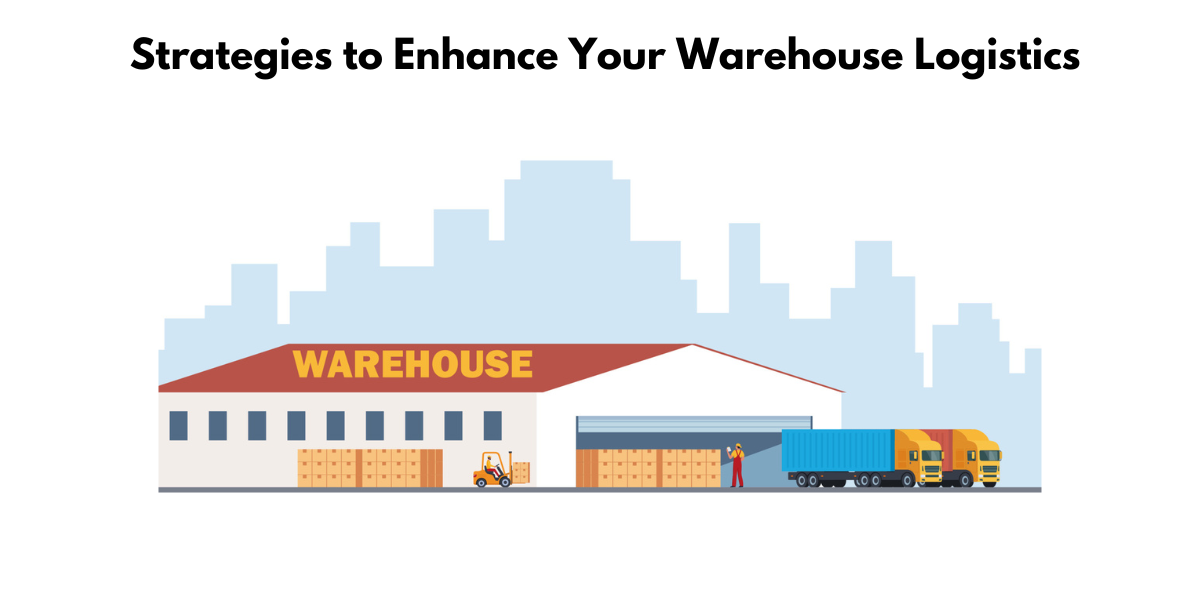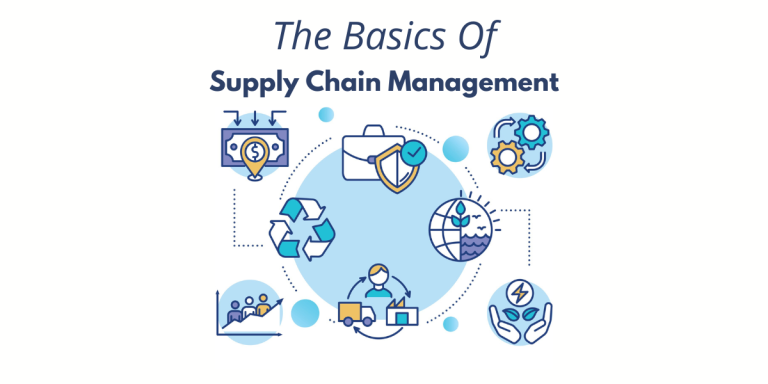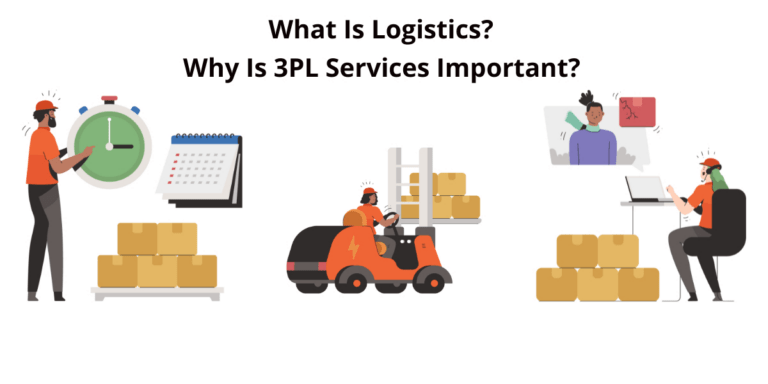Warehouse Logistics: 10 ways to elevate your business’s SCM
What is warehouse logistics?
Warehouse logistics is the process of planning, organizing, and controlling how goods move within a warehouse to meet business objectives.
It involves the flow of physical inventory as well as the flow of more abstract goods, such as information and time.
Warehouse logistics covers all the policies, procedures, and organizational tools that keep warehouse operations running smoothly.
These are the responsibilities of warehouse logistics:
- receiving
- putting away
- storing
- shipping physical inventory
- handling damaged goods and customer returns
Moreover, warehouse logistics also relates to the information flow associated with the movement of inventory, which needs to move transparently and seamlessly for goods to be correctly transported within the warehouse.
Benefits of warehouse logistics
Warehouse logistics is a vital element of any successful business.
It encompasses the flow of physical goods, information, and time within the warehouse and involves managing tasks such as damaged goods management, safety procedures, and customer returns.
Optimizing warehouse logistics allows ecommerce retailers to increase productivity and ensure timely fulfillment.
Let’s explore the benefits of warehouse logistics, such as ensuring accurate, real-time inventory data, avoiding stockouts, and optimizing warehouse space.

1. Increased efficiency and productivity
Warehouse logistics can help increase efficiency and productivity by eliminating waste and improving resource allocation and management.
Automation and adopting a lean methodology can reduce labor costs, reduce overhead expenses, shorten processing times, and optimize processes.
This can result in improved customer satisfaction, fewer sales returns, and fewer wasted labor hours.
Moreover, warehouse logistics can help find the optimal location to store equipment and inventory and help standardize workflows to reduce material handling inefficiencies.
These combined elements can help companies boost efficiency and productivity, decrease attrition rates, and improve customer loyalty.
2. Improved workflow and process efficiency
Improved workflow and process efficiency can benefit warehouse logistics by increasing productivity and reducing overhead costs.
Automating certain tasks and streamlining processes through warehouse management software can free your team to receive, sort, package, and ship additional products.
This, in turn, can directly increase profits and eliminate tedious manual labor.
Additionally, the 5S methodology can be implemented to provide an organized workstation and improve productivity by eliminating the need to search for tools and equipment around the warehouse and providing immediate visibility into warehousing problems.
Furthermore, a robust warehouse management system can be used to make systematic labor allocation possible, resulting in reduced labor costs, increased morale, and improved efficiency for the team.
Improved workflow and process efficiency can ultimately help optimize warehouse logistics and operations.
3. Increased control over inventory
By using a warehouse logistics service, businesses can gain better visibility into their inventory, which helps with inventory control.
Improved visibility allows businesses to make more informed decisions regarding ordering and stocking inventory, minimizing excess inventory, and reducing returns.
Additionally, warehouse logistics services help automate warehouse operations, such as cycle counting and product picking, which can help reduce errors and increase efficiency, ultimately leading to increased revenue.
4. Improved visibility and transparency into inventory
Improving visibility and transparency into inventory helps with warehouse logistics by providing accurate inventory counts, exact storage locations, and end-to-end control over stock.
This ensures that warehouse operations can be controlled from a centralized location, such as cycle counting, monitoring product quantity, picking and packing. It also limits inventory movement, reduces lead times and improves accuracy.
An inventory management system to centralize and keep all inventory records updated in real-time is also essential for accurate data.
Furthermore, conducting regular inventory audits helps maintain reliable, up-to-date data, enabling informed decisions.
All of these features help improve the overall efficiency of the warehouse, reduce operational costs, and achieve higher customer satisfaction.

5. Reduction in supply chain costs
A warehouse logistics service can help reduce supply chain costs in various ways.
Through improved inventory management and accurate delivery times, businesses can reduce the time and money spent on shipping and receiving goods.
By optimizing the flow of physical goods and information, companies can reduce the costs associated with storing, damaging, and repackaging products.
Additionally, utilizing maintenance and warehouse management systems can help companies collect data and make informed decisions that reduce the costs associated with warehousing.
Finally, providing customers with free or reduced shipping costs can improve customer loyalty and increase satisfaction, thus leading to fewer returns and lower costs.
Challenges of warehouse logistics
Warehouse logistics can be an extremely challenging task to manage.
It involves many processes, programs, and people to ensure physical goods flow, provide customers with real-time information, and effectively handle multiple warehousing issues.
Common challenges revolve around the organization, inventory management, supply chain management, cost controls, human resources, risk management, security, etc.
These challenges can directly impact a business’s revenues and customer satisfaction.
It is essential to pinpoint the exact location of an item in inventory, the pallet that carries an expired food item, or the truck that shipped a damaged item during shipment.
1. Inefficient processes
Inefficient processes related to warehouse logistics include the following:
- locating items
- handling damaged items
- inefficient processes
- miscommunication
- accurate inventory data
- inadequate receiving and putaway processes
- lack of workforce needed for existing operations
- manual paper or spreadsheet operations
- inefficient picking
- delays in order picking
- storing items in the wrong location
- delays in order shipping and delivery
- issues with picking accuracy and product damages
2. Lack of warehouse automation
A lack of warehouse automation can have a devastating effect on warehouse logistics.
Without automated technologies, warehouses must rely on manual labor and traditional paper-based processes.
This leads to decreased productivity and a higher risk of human errors, resulting in costly delays and inaccuracies.
Additionally, without automated systems, warehouses can experience costly inventory inaccuracy, longer turnaround times, and a lack of visibility into processes, making it difficult to adjust to changes in demand or the market.
Furthermore, warehouses lacking automation technology will likely fall behind their competitors, losing market share and potential customers.

3. Poor workflow efficiency
Poor workflow efficiency can lead to various issues that can hurt warehouse logistics.
These include increased costs due to overtime payments or re-picking items, delays in order picking and shipping, product damages, and inaccurate inventory data.
Additionally, inefficiencies in the warehouse can lead to difficulty locating items, miscommunication between staff, and improper planning and allocation of resources.
These can cause delays in inventory outflow, resulting in customer orders not being fulfilled on time and other logistical problems.
Ultimately, poor workflow efficiency can cause issues that reduce business productivity, increase overhead costs, and lead to a poor customer experience.
4. Lack of warehouse storage capacity
A lack of warehouse storage capacity can majorly impact warehouse logistics.
Without adequate storage space, businesses may be unable to store bulk products or items, leading to lost revenue.
Without sufficient storage, warehouses can experience delays in order picking, packing and shipping, as workers struggle to move around the limited space efficiently.
Sometimes, storing items in the wrong location or using poor shelving systems can lead to damaged goods and at-risk inventory, resulting in shrinkage and headstock.
Finally, a lack of space can lead to congestion in the warehouse, making it difficult to optimize the layout and speed up the process.
5. Poor inventory control systems
Poor inventory control systems can have a severe impact on warehouse logistics.
When inventory records are not accurately kept and updated, it can lead to workers spending more time locating items for picking, resulting in delays in fulfillment.
Additionally, inaccurate inventory records mean that businesses might not be reordering items at the right time, leading to stockouts, which further translates to long lead times.
Inefficient warehouse operations and storage planning can also cause damaged goods and at-risk inventory, reducing inventory.
Furthermore, any delays in warehousing processes can also cause delays in order fulfillment and adversely affect other aspects of the supply chain, such as inventory receiving and storage.

10 ways to elevate your business’s supply chain management
As warehouse logistics play a vital role in the success of any business, it is important to understand the common challenges and the advantages of having an effective and intuitive warehouse logistics strategy.
Effective warehouse logistics can help take your business to the next level, from increased efficiency to higher customer satisfaction.
Here are 10 ways to elevate your business’s supply chain management.
1. Implement a warehouse management system
A warehouse management system can greatly benefit businesses regarding their supply chain management.
Companies can gain real-time visibility across departments through WMS and maintain accurate inventory counts.
It automates many operational processes, such as order processing, inventory management and shipping, thereby eliminating the need for manual tasks.
WMS also provides supervisors complete control over warehouse logistics, from inventory tracking to returns, ensuring that all processes run smoothly.
Furthermore, WMS can generate customized reports based on specific KPIs, which helps identify improvement areas.
In short, WMS offers a wealth of valuable information which can be used to effectively manage the entire supply chain and maximize the company’s efficiency and profitability.
2. Understand your warehousing requirements
By understanding your warehousing requirements, you can identify the best location to store your goods, optimize your storage space, and choose the right equipment and machinery for the warehouse in logistics.
This helps to elevate your business’s supply chain management by reducing transportation costs, improving order fulfillment efficiency, and enabling you to serve customers better.
Additionally, understanding your warehousing requirements allows you to accurately estimate the cost of the project and its potential for cost savings, helping to ensure that you make the most cost-effective decisions for your business.
Understanding your warehousing requirements also ensures that you have the right professionals and resources to manage your logistics warehouse management properly, maximizing efficiency and preventing costly mistakes.
Understanding your warehousing requirements can help increase efficiency, reduce costs, and improve customer satisfaction, ultimately elevating your business’s supply chain management.
3. Invest in automation solutions
Automating solutions can help elevate a business’s supply chain management by streamlining processes and eliminating manual labor.
Automated fulfillment is a popular solution used in warehouses to process orders and send them to their destination automatically.
Additionally, picking, packing, shipping, and generating labels can all be automated.
Logistics warehouse automation also offers increased productivity, reduced labor risks, and more accurate order fulfillment.
With the right technology and software, businesses can automate mundane tasks and free their employees to focus on more important activities.
Barcode technology can also eliminate manual data entry tasks and reduce manufacturing errors.
Automation also has the potential to bolster employee morale by streamlining operations and making their jobs easier.
The warehouse automation market is projected to be worth $30 billion by 2026 and is a key factor in improving supply chain management.
4. Create a warehousing plan
Creating a comprehensive warehousing plan can help elevate a business’s supply chain management by ensuring efficient operations, optimizing costs and time, and meeting broader organizational goals.
A robust plan should include capacity planning to make the most efficient use of the warehouse space, receiving inbound shipments and tracking inventory, storing products, and implementing a safety policy.
Additionally, businesses should estimate and plan for operational costs, analyze product trends and forecasts, and choose the right software to manage operations.
By taking these steps, businesses can ensure their warehouse logistics are optimized, handle customer demand, and prevent disruptions, should they occur.

5. Implement a tagging system
Implementing a tagging system can greatly elevate a business’s supply chain management by allowing for accurate tracking and monitoring of inventory, orders and shipments.
This system can quickly identify where items are located, how much is available, and when it is due to arrive.
Tags also provide real-time data that can be used to make decisions on inventory levels, so you can better manage stock levels and ensure availability.
With improved visibility into the supply chain, businesses can make smarter decisions that lead to less waste and higher profits.
Additionally, tagging systems allow for greater efficiency and accuracy in inventory management, reducing costly errors and improving customer satisfaction.
6. Review your stock movement processes
Reviewing stock movement processes to ensure inventory is properly managed and orders are fulfilled promptly and efficiently is important.
With the right inventory visibility and warehouse management system in place, tracking and monitoring the flow of goods and ensuring the right product is pulled from stock is easier.
This helps minimize errors, reduce returns, and ensure customers get the right product the first time.
Additionally, accurate inventory counts and real-time stock tracking help prevent stockouts and allow for more efficient space utilization in the warehouse.
Ultimately, regular reviews of stock movement processes help businesses maximize value and increase revenue.
7. Introduce a warehouse logistics software
Introducing warehouse logistics software can be an effective way to elevate a business’s supply chain management.
By automating tasks and streamlining processes, this software can help reduce the amount of manual labor required, freeing up employees to focus on other areas of the business.
Additionally, using barcodes and real-time data can ensure that inventory is accurately tracked and updated, reducing the risk of stock outages or miscalculations.
Moreover, the software can generate customized reports to identify areas of improvement and ensure that warehouse logistics are continually monitored and updated.
This comprehensive approach can help ensure that the right amount of orders are processed and delivered most efficiently while avoiding costly delays and disruptions.
Finally, warehouse logistics software can help to keep everyone connected, provide insight into inventory levels, and alert users when it’s time to reorder from suppliers.
By providing an efficient and cost-effective approach to warehouse logistics, businesses can maximize their profits, improve customer satisfaction, and ensure their supply chain runs smoothly.
8. Streamline your warehouse tasks
Streamlining warehouse tasks can help elevate a business’s supply chain management by providing the necessary tools and technology to automate tasks, reduce overhead costs, and increase profits.
Businesses can gather real-time data across their operations by implementing the right technology and software, such as warehouse management software, eliminating gaps and inefficiencies.
Implementing the 5S methodology can help organize workstations and provide visibility into warehousing problems.
Furthermore, properly training employees on the latest equipment and coordinating with contractors and suppliers can help streamline warehouse tasks and maximize efficiency.
By monitoring warehouse logistics and implementing changes, businesses can quickly see improvements and continue to make further adjustments.
9. Implement software for inventory management
Implementing inventory management software can help elevate a business’s supply chain management by providing visibility across different departments and streamlining processes.
Such software can gather data in real time across operations, which helps to eliminate gaps and inefficiencies.
It also helps keep accurate inventory records, ensuring customer orders are timely.
Additionally, the software can alert the business to the best time to reorder from suppliers, ensuring the right amount of inventory is available according to projected sales.
Using cloud-based warehouse management software, businesses can ensure their team is always connected, and all data is accurate, so there is no discrepancy between data sources.
Therefore, implementing software for inventory management can help businesses improve their warehouse logistics and supply chain management.
10. Create a warehousing strategy
Creating an effective warehousing strategy can help elevate a business’s supply chain management by increasing overall efficiency and accuracy, improving inventory management, reducing operational costs, and increasing customer satisfaction.
With an ideal plan, businesses can streamline their supply chain, resulting in lower costs and faster delivery times for their customers.
By utilizing effective WMS software, businesses can monitor and consolidate their data in one place, allowing them to more easily manage their warehouse logistics and reduce the cost of surplus inventory.
Additionally, businesses can use vertical space by setting up racks and pallets or storing goods in trailers, allowing them to maximize their storage space.
With the right warehouse strategy, businesses can capitalize on the benefits of warehousing and increase their overall efficiency and customer satisfaction.
- Warehouse Logistics: 10 ways to elevate your business’s SCM - November 2, 2023
- What is a Fulfillment Center and How Can it Help Your Ecommerce Sales? - January 24, 2023
- What is a Fulfillment Center: A Comprehensive Guide - December 22, 2022







